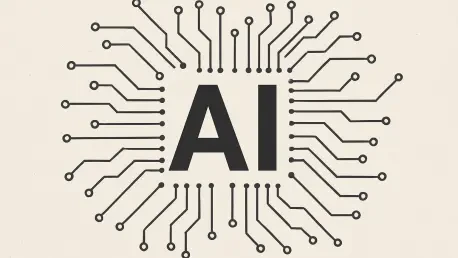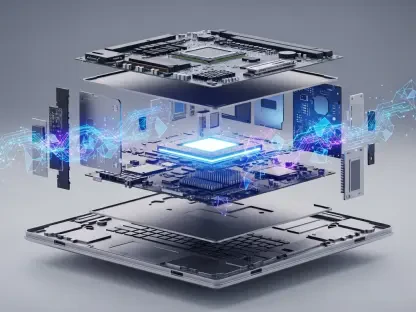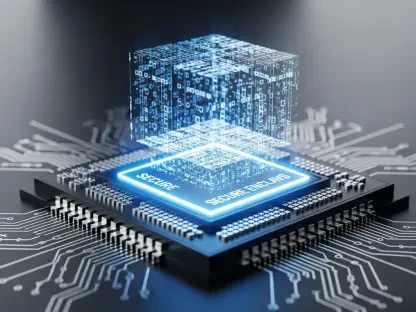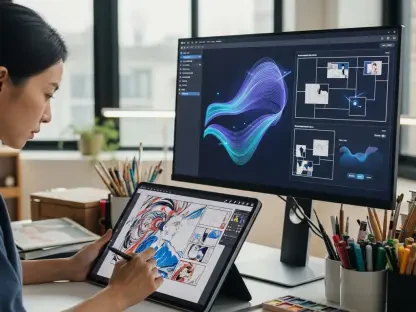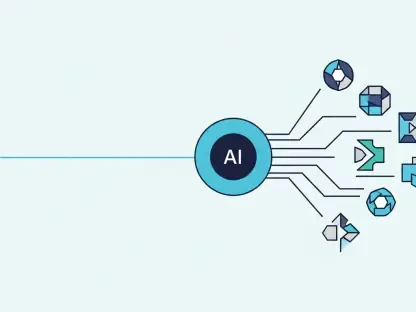In a groundbreaking development, researchers at the Massachusetts Institute of Technology (MIT) have unveiled a new method that promises to transform the field of AI image generation by eliminating the need for traditional generators. This revolutionary approach leverages tokenizers and decoders, challenging the established norms of how images are conventionally created, converted, and modified using artificial intelligence. With the AI image generation market anticipated to reach a billion-dollar valuation in the coming years, this innovation could have far-reaching implications for the industry. Neural networks are currently the cornerstone of AI image generation, tasked with creating new visuals from diverse inputs, such as text prompts. These networks typically require training on extensive datasets comprising millions of images, a process that is both computationally and time-intensive. However, the MIT researchers’ novel method circumvents this requirement, presenting a more efficient and resource-saving alternative. Detailed in their paper presented at the International Conference on Machine Learning (ICML 2025) in Vancouver, this research introduces new possibilities for the industry.
The State of AI Image Generation
Traditional AI image generation techniques rely heavily on generators, which are instrumental in compressing and encoding visual data to produce images. The process involves training these models on large datasets, a task that demands substantial computational resources and time. Despite its effectiveness, this method is increasingly seen as inefficient in terms of resource utilization and energy consumption. The MIT team, however, brings a fresh perspective to this domain. Their research is an extension of prior work by collaborators from the Technical University of Munich and the Chinese company ByteDance. This earlier effort introduced a one-dimensional tokenizer capable of compressing a 256×256-pixel image into a sequence of just 32 tokens. This advancement marked a significant leap forward in the field of image tokenization. Unlike the previous generation of tokenizers, which segmented images into an array of 16×16 tokens focusing on specific quadrants, the new 1D tokenizer encodes holistic image data using fewer tokens. This development allows machines to process visual information more efficiently while reducing the computational load traditionally associated with image generation.
The efficiency gains achieved through the use of tokenizers can significantly alter the paradigm of AI image processing. These tokens are designed to capture a wide range of image attributes, including resolution, texture, light effects, and even the pose of subjects within the frame. By concentrating computational power on fewer but more comprehensive tokens, the system effectively reduces the burden on processing units, cutting down on energy consumption without sacrificing the quality of image generation. As demand for AI solutions escalates across industries, such innovations are not only relevant but necessary to meet the challenges of environmental sustainability and economic feasibility. The MIT research pushes the frontiers of this technology by demonstrating that simpler, more elegant solutions can be found in existing methodologies when they are applied creatively and thoughtfully.
Novel Tokenizers and Their Impact
The implications of the MIT study are profound, with potential applications extending well beyond the realm of AI-driven art and visuals into sectors such as robotics, autonomous vehicles, and more. By adopting high-level compression tokens, researchers at MIT have discovered that these tokens can be manipulated to influence various aspects of an image, from resolution and clarity to brightness and object placement within the frame. During their experiments, the research team, led by Lukas Lao Beyer, Tianhong Li, Xinlei Chen, Sertac Karaman, and Kaiming He, observed that random removal or swapping of tokens could result in visually discernible changes in the generated images. This manipulation introduced a revolutionary approach to image editing, where systematic and automated modifications could be made without the need for manual adjustments. The tokens’ capacity to encapsulate comprehensive image characteristics enables sophisticated editing processes, such as inpainting—where missing sections of images are seamlessly filled—and generating entirely new images without conventional generators.
Central to the innovative approach pioneered by the MIT team is their integration of the tokenizer-detokenizer model with an established neural network, CLIP. This fusion allows the system to generate images guided by textual prompts, effectively transforming an input image in nuanced ways, such as altering an image of a red panda into that of a tiger by refining the arrangement of tokens. This integration not only demonstrates the untapped potential of 1D tokenizers but also redefines the role of traditional methodologies in AI image creation. Instead of creating new technologies from scratch, the MIT researchers discovered synergies between existing tools, highlighting the versatility and power inherent in current technology when applied in novel ways. This innovative philosophy challenges existing paradigms by utilizing off-the-shelf technologies to achieve remarkable results deemed previously impossible without a dedicated generator.
Broader Implications and Future Directions
The broader implications of these findings resonate across multiple technological sectors. As noted by experts such as Saining Xie of New York University, the tokenization approach could significantly impact areas like autonomous robotics and vehicles, where the ability to process and interpret visual data quickly and efficiently is paramount. Similarly, Zhuang Liu of Princeton University points out that by advancing the understanding of image generation and manipulation, this research simplifies processes previously regarded as technically daunting and resource-intensive. The key contribution of this research lies in leveraging existing models innovatively, unlocking new functionalities for image tokenizers. The efficiency and resource savings demonstrated by the MIT approach offer considerable potential for more streamlined and cost-effective AI systems in the future, broadening the spectrum of possibilities for application across various fields. These advancements illustrate how effective image compression techniques can inadvertently lead to efficient image generation processes, paving the way for the widespread adoption of AI technologies across a wide array of industries.
With these new insights, the industry could see a shift in focus from creating new hardware solutions to optimizing existing software methodologies. This shift would not only drive down costs but also promote a more sustainable approach to technological advancement. As industries become increasingly dependent on AI-driven solutions for everything from design and entertainment to automated transportation systems, the methodologies developed by the MIT team are likely to inspire further research and innovation. These developments highlight the importance of continued exploration and adaptation of existing technologies to meet the evolving needs of a digital world. By pushing the boundaries of what is possible with current AI techniques, the MIT team has paved the way for future breakthroughs that could redefine creative processes, enhance automation efficiency, and ultimately transform how society interacts with technology.
Embracing a New Paradigm in AI
Traditional AI image generation methods rely on generators to compress and encode visual data, creating images through extensive training on large datasets. This process demands significant computational resources and extended time, making it increasingly inefficient in terms of resource use and energy consumption. However, the MIT team introduces an innovative approach to this field. Their research builds on previous work by collaborators from the Technical University of Munich and ByteDance, which developed a one-dimensional tokenizer capable of compressing a 256×256-pixel image into just 32 tokens. This was a major advancement in image tokenization, moving beyond earlier tokenizers that broke images into 16×16 tokens to focus on quadrants. The 1D tokenizer encodes complete image data with fewer tokens, enabling more efficient machine processing and reduced computational burdens.
The implementation of tokenizers brings significant efficiency gains, potentially transforming AI image processing. Tokens capture image features like resolution, texture, lighting, and subject pose, concentrating computational efforts and reducing energy use without compromising image quality. As the demand for AI solutions surges across industries, such innovations are crucial for environmental sustainability and economic viability. The MIT research showcases how existing methodologies can yield simpler and more effective solutions when applied creatively. This advancement highlights a shift towards more efficient AI technologies that are essential for meeting modern challenges.
